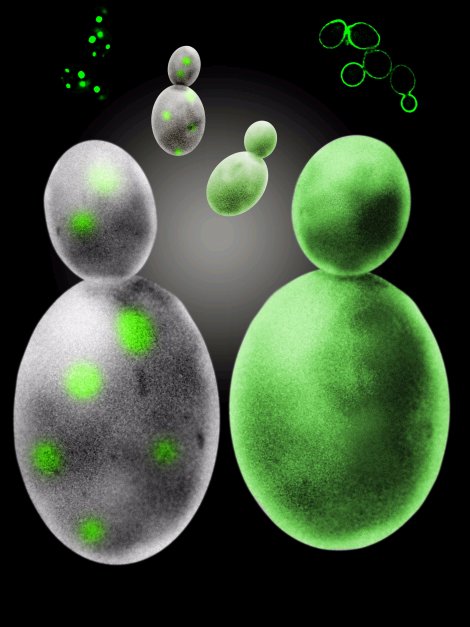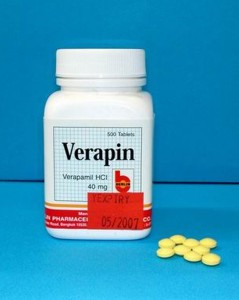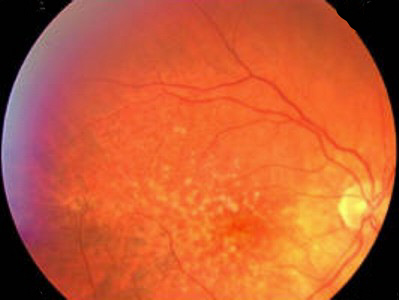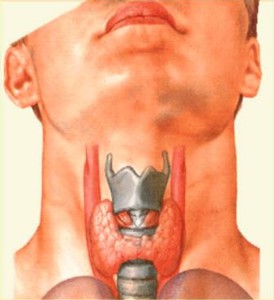.gif) VIARTIS � |
||||||
|
PARKINSON'S DISEASE |
||||||
| � � |
||||||
|
� � � � |
PARKINSON'S DISEASE NEWS � |
� � � � � � � � � � � � � � � |
||||
|
JULY 2008�������� 31st July 2008 - News release
michael j.fox foundation funds "RAPID
RESPONSE AWARDS" Among the projects funded are : (1) To determine whether a gene silencing technique can be effective in reducing alpha-synuclein, a protein whose aggregation, or clumping, in the brain is sometimes found in Parkinson�s Disease. (2) Using newly induced pluripotent stem cell technology to shed greater light on the Parkinson�s-implicated genes parkin and LRRK2.
These latest projects, are lacking in a sound scientific rationale : (1) Alpha synuclein cannot logically be claimed to cause Parkinson's Disease because alpha synuclein occurs in people without any trace of Parkinson's Disease. (2) The Parkin and LRRK2 genes have merely inclined a small proportion of people towards Parkinson's Disease. They certainly aren't inevitable causes of Parkinson's Disease, even in the small proportion of people that are affected by them. (3) Nicotine receptors have never been shown to be responsible for Parkinson's Disease. Drugs already known to affect the nicotine receptors have never rid anyone of Parkinson's Disease. (4) The Braak hypothesis that Parkinson's Disease is caused by the gastrointestinal system is equally unsound. L-dopa rids Parkinson's symptoms despite not having any beneficial effect on the gastro-intestinal system. There are dozens of cell types in the brain that would be affected by Braak's theory. Yet Parkinson's Disease can occur without somebody simultaneously suffering from every other neurological disorder. � 28th July 2008 - New review parkinson's disease SYMPTOM QUESTIONNAIRESDespite the increasing use of scanning methods to diagnose Parkinson's Disease, symptom questionnaires remain the most common method of assessing symptoms.� The most commonly used symptom questionnaire is the Unified Parkinson Disease Rating Scale (UPDRS). The UPDRS was developed to address the need for a comprehensive Parkinson's Disease measurement tool. It encompasses earlier rating scales : Hoehn and Yahr staging scale, and the modified Schwab and England activities of daily living scale. In monotherapy, a �Total UPDRS� score is the combined sum of parts I, II, and III: 0 (not affected) to 176 (most severely affected). In adjunct therapy, part IV is included. Part IV contains 11 questions and the scale can range from 0 to 23. For an understanding of the UPDRS go to UPDRS. The Hoen and Yahr characterises patients according to a scale of five stages of severity, from Stage 1, which is mild, to Stage 5, which is incapacitated. For the questionnaire go to the Hoehn and Yahr scale. The Schwab and England Activities of Daily Living assesses patients in terms of their degree of independence concerning their functions - with a range a percentages from 100% to 0%. Rating can be assigned by the rater or the patient. For the questionnaire go to the Schwab and England. The PDQ39 assesses the quality of life. The PDQ-39 is the most widely used Parkinson's Disease specific measure of health status. It contains thirty nine questions, covering eight aspects of quality of life. Scores on the PDQ range from 0 to 100, with higher scores reflecting greater problems. For the questionnaire go to PDQ 39. The PDQL is a self administered measure that contains 37 items contained in four sub-scales : parkinsonian symptoms, systemic symptoms, social functioning. An overall scale can be derived, with a higher score indicating better perceived quality of life. For the questionnaire go to the PDQL. For more information on the diagnosis of Parkinson's Disease, go to Diagnosis of Parkinson's Disease. � 26th July 2008 - New research HALLUCINATIONS IN parkinson's diseasePractical Neurology [2008] 8 (4) : 238-241 (Poewe W.) Complete abstractVisual hallucinations occur in up to 40% of people with Parkinson's disease. However, hallucinations are not actually due to Parkinson's Disease. Age and cognitive decline are the most important intrinsic risk factors, but hallucinations are often triggered by conditions such as infection and dehydration.
� 22nd July 2008 - New research blood mechanisms claimed to cause parkinson's diseaseMany people with Parkinson's Disease have elevated levels of a protein called alpha-synuclein in their brains. As alpha-synuclein accumulates, the resulting toxicity is claimed to cause damage to the cells that produce dopamine. Researchers were surprised to notice that there were also large amounts of alpha-synuclein in the blood.�
The main weakness in the claim that alpha-synuclein causes Parkinson's Disease and that its reduction will rid it, is that a lot of people with Parkinson's Disease do not have large amounts of alpha-synuclein. There is no evidence that alpha-synuclein actually causes Parkinson's Disease, only that it can be associated with it. Alpha-synuclein is associated with a variety of medical disorders that are not Parkinson's Disease. Parkinson's Disease does not usually coincide with these medical disorders as it would if alpha-synuclein was the cause of Parkinson's Disease. Alpha-synuclein produced in the blood is unable to pass in to the brain in order to cause Parkinson's Disease anyway. � 19th July 2008 - News release michael j.fox foundation funds nine new approachesThe Michael J. Fox Foundation for Parkinson�s Research has announced approximately $2.4 million funding for nine research projects. This annual program provides resources to help push potential Parkinson's Disease drug targets toward clinical trials. Target validation is a phase of drug development in which researchers work to determine whether a molecule or mechanism of interest is a true drug target.
These projects all aim at finding targets for new drugs. However, none of them, even in theory, address the known biochemical fault in Parkinson's Disease, which is insufficient formation of dopamine. All of the projects are biochemically far removed from the possibility of increasing dopamine formation, and are consequently without any scientific rationale that would justify their use. The Michael J.Fox Foundation web site claims "We don't just fund research. We fund results." However, despite their good intentions, none of the projects ever funded by the Foundation have resulted in anyone being rid of Parkinson's Disease. � 16th July 2008 - New research suicide in parkinson's diseaseMovement Disorders [2008] Jul
10; [Epub ahead of print] (Nazem S, Siderowf AD, Duda JE, Brown GK, Ten Have T,
Stern MB, Weintraub D.)
Complete abstract 1. Have you ever felt that life
was not worth living ? Extensive psychiatric, neuropsychological, and neurological assessments were also carried out. Thoughts of death occurred in 28% of patients. Thoughts of suicide occurred in 11% of patients. Thoughts of either had occurred in 30% of patients. Of all those assessed, 4% had attempted suicide during their lifetime. Depression was far more common than normal. Even more common was impulse control disorder, but this was probably due to Parkinson's Disease drugs, especially dopamine agonists. Psychosis was also far more common in Parkinson's Disease, but this was also probably due to Parkinson's Disease drugs, especially L-dopa. � 13th July 2008 - New research essential tremor developing in to parkinson's diseaseMovement Disorders [2008] Jul 10; [Epub ahead of print] (Minen MT, Louis ED.) Complete abstract There is a blurred distinction between Essential Tremor and Parkinson's Disease. There are people with Essential Tremor who have a degree of muscle rigidity, which is more characteristic of Parkinson's Disease. Most people with Parkinson's Disease have tremor, but around 30% don't have tremor at all. Patients with essential tremor can develop Parkinson's Disease. However, few studies have examined the clinical features of this combination syndrome. Patients with ET-PD were compared to those with Parkinson's Disease and others with only Essential Tremor. The time it took to go from the onset of Essential Tremor to Parkinson's Disease was brief - less than five years in nearly 40% of people, but in around 30% of people, Essential Tremor took over 20 years before developing in to Parkinson's Disease.
� 10th July 2008 - New review dopamine receptors and dopamine agonistsIt is widely claimed that Parkinson's Disease is primarily due to a lack of dopamine, and L-dopa, which forms it. However, dopamine on its own does nothing at all. Dopamine has to stimulate the dopamine receptors before it has any effect. Dopamine receptors are proteins, which means that they are a long chain of amino acids - just like a pearl necklace is a long chain of pearls. There are five types of dopamine receptor : D1, D2, D3, D4, D5. Each of them are different sizes, as they have a different number of amino acids. D1 has 446. D2 has short and long versions, with the short version being 414 long, and the long version being 443 long. D3 is 400 amino acids long. D4 is usually 387 amino acids long. However, there are a large number of genetic variants of D4, especially amongst Americans.
Dopamine agonists make use of the different functions of the dopamine receptors by primarily stimulating those dopamine receptors that reduce excessive muscle contraction - usually D2 or D3. For example, Mirapex primarily stimulates D3. Parlodel primarily stimulates D2. Whilst Neupro stimulates three dopamine receptors D1, D2, D3. The problem with taking dopamine agonists is that this can disproportionately stimulate certain dopamine receptors rather than others - often giving rise to compulsive behaviours, especially with those that stimulate D3. Continuous use of dopamine agonists also makes the� dopamine receptors progressively less sensitive. Dopamine agonists consequently have progressively less effect, and can also cause naturally produced dopamine to be less effective. In the long term this can make Parkinson's Disease progressively worse.� � 5th July 2008 - New research CALCIUM channel BLOCKERS - A CAUSE OF PARKINSON'S DISEASEParkinsonism Related Disorders [1998] 4 (4) : 211-214 (Garcia-Ruiz PJ, Javier Jimenez-Jimenez F, Garcia de Yebenes J.) Complete abstract Calcium channel blockers are drugs that are widely used to reduce high blood pressure. For more information go to Calcium channel blockers. The symptoms of Parkinson's Disease are a frequent side effect of some calcium channel blockers (CCB). CCB-induced Parkinsonism usually improves spontaneously after discontinuation of the offending drug, but many patients still exhibit persistent symptoms after their withdrawal. It is not known whether Parkinsonism caused by Calcium channel blockers represents sub-clinical Parkinson's disease unmasked by drugs.
� 4th July 2008 - News release spheramine (retinal cell therapy) fails clinical trials�It had been claimed that a cell therapy using retinal pigment epithelial (RPE) cells, called Spheramine, could improve the symptoms of people with Parkinson�s disease. Spheramine consists of retinal pigment epithelial (RPE) cells attached to tiny gelatin bead microcarriers implanted in the brain. The microcarriers are necessary for the cells to survive in the brain.
� 3rd July 2008 - New research THYROID FUNCTION IN PARKINSON'S DISEASE Parkinsonism Related Disorders [1999] 5 (1-2) : 49-53 (Bonuccelli U, D'Avino C, Caraccio N, Del Guerra P, Casolaro A, Pavese N, Del Dotto P, Monzani F.) Complete abstract Thyroid disease is the endocrine dysfunction most frequently reported in association with idiopathic Parkinson's Disease. The aim of this study was to assess thyroid function in Parkinson's Disease, and to verify the effect of long term L-dopa or dopaminergic therapy on thyroid function.
� 1st July 2008 - New web site Hacia adelante - SPANISH LANGUAGE WEB SITE FOR PARKINSON'S DISEASE
�
�
|
||||||
| � | ||||||
.gif) |
||||||
| � | ||||||
| �2006-2008 Viartis | ||||||
| � | ||||||
| [email protected]� | ||||||
 (3) To
better understand epidemiological findings that have consistently shown smoking
may protect against Parkinson's Disease. Researchers hope to elucidate the
mechanisms by which nicotine may protect dopamine neurons through development of
a screening test for small molecules that could increase nicotine receptor
expression in the brain. (4) To find better treatments for the digestive
problems that affect Parkinson�s patients� quality of life, as well as test the
Braak hypothesis, which claims that Parkinson�s disease progresses through the
body to the brain in a series of stages starting in the gastrointestinal system.
For more information go to
(3) To
better understand epidemiological findings that have consistently shown smoking
may protect against Parkinson's Disease. Researchers hope to elucidate the
mechanisms by which nicotine may protect dopamine neurons through development of
a screening test for small molecules that could increase nicotine receptor
expression in the brain. (4) To find better treatments for the digestive
problems that affect Parkinson�s patients� quality of life, as well as test the
Braak hypothesis, which claims that Parkinson�s disease progresses through the
body to the brain in a series of stages starting in the gastrointestinal system.
For more information go to
 The single most important trigger, however, is the use of� CNS drugs,
especially drugs for Parkinson's Disease.
While hallucinations and psychosis can be triggered by amantadine and
anticholinergics, they are more commonly
experienced after changes in dopaminergic drugs. Dopamine agonists have the
greater potential to induce hallucinations compared with L-dopa. Attempting to
reduce Parkinson's Disease drugs is an important part in the management of these
symptoms, but atypical neuroleptics like clozapine or quetiapine are often also
used. Visual hallucinations in Parkinson's disease patients with dementia can
also be improved by treatment with the cholinesterase inhibitor rivastigmine.
The single most important trigger, however, is the use of� CNS drugs,
especially drugs for Parkinson's Disease.
While hallucinations and psychosis can be triggered by amantadine and
anticholinergics, they are more commonly
experienced after changes in dopaminergic drugs. Dopamine agonists have the
greater potential to induce hallucinations compared with L-dopa. Attempting to
reduce Parkinson's Disease drugs is an important part in the management of these
symptoms, but atypical neuroleptics like clozapine or quetiapine are often also
used. Visual hallucinations in Parkinson's disease patients with dementia can
also be improved by treatment with the cholinesterase inhibitor rivastigmine. The researchers
discovered that the activity of genes that control the formation of hemoglobin,
which is what enables blood to carry oxygen, precisely matched the activity of
the alpha-synuclein gene, suggesting a common switch controlling both the
formation of blood, and the damage that occurs in Parkinson's Disease. The� protein called GATA-1, which turns on the
genes in the blood, was also a major switch for producing alpha-synuclein. They
also demonstrated that a related protein, GATA-2, was produced in brain cells
that were vulnerable to Parkinson's Disease. The researchers claim that reducing the formation of alpha-synuclein by 40%� may be enough to
treat some forms of Parkinson's disease.
For more information go to the
The researchers
discovered that the activity of genes that control the formation of hemoglobin,
which is what enables blood to carry oxygen, precisely matched the activity of
the alpha-synuclein gene, suggesting a common switch controlling both the
formation of blood, and the damage that occurs in Parkinson's Disease. The� protein called GATA-1, which turns on the
genes in the blood, was also a major switch for producing alpha-synuclein. They
also demonstrated that a related protein, GATA-2, was produced in brain cells
that were vulnerable to Parkinson's Disease. The researchers claim that reducing the formation of alpha-synuclein by 40%� may be enough to
treat some forms of Parkinson's disease.
For more information go to the
 The
nine projects are (1) CaMKII as a Therapeutic Target in Parkinson's Disease, (2)
Evaluation of the Striatum-enriched Genes CalDAG-GEF1 and CalDAG-GEF2 as Targets
for the Treatment and Prevention of L-DOPA Induced Dyskinesia, (3) Hsp90 as a
Target for Neuroprotective Agents in Parkinson's Disease, (4) NBD Peptides in a
Non-Human Primate Model of Parkinson's Disease, (5) Mu Opioid Receptors as a
Drug Target for Treating Motor Fluctuations in PD, (6) Dopaminergic
Neuroprotection by Regulator of G-protein Signaling 10 (RGS10), (7) Validation
of the NR2D Subunit of the NMDA Receptor as a Therapeutic Target for Parkinson's
Disease, (8) NR2B as a Therapeutic Target in Parkinson's Disease, (9) SIRT1
Activators as Therapy for Parkinson's Disease.
For more information go to
The
nine projects are (1) CaMKII as a Therapeutic Target in Parkinson's Disease, (2)
Evaluation of the Striatum-enriched Genes CalDAG-GEF1 and CalDAG-GEF2 as Targets
for the Treatment and Prevention of L-DOPA Induced Dyskinesia, (3) Hsp90 as a
Target for Neuroprotective Agents in Parkinson's Disease, (4) NBD Peptides in a
Non-Human Primate Model of Parkinson's Disease, (5) Mu Opioid Receptors as a
Drug Target for Treating Motor Fluctuations in PD, (6) Dopaminergic
Neuroprotection by Regulator of G-protein Signaling 10 (RGS10), (7) Validation
of the NR2D Subunit of the NMDA Receptor as a Therapeutic Target for Parkinson's
Disease, (8) NR2B as a Therapeutic Target in Parkinson's Disease, (9) SIRT1
Activators as Therapy for Parkinson's Disease.
For more information go to
 In
Parkinson's disease, there is a high prevalence of depression. This is because
dopamine, whose deficiency normally causes the muscular symptoms of Parkinson's
Disease, also affects the emotions. Many people with Parkinson's Disease
consequently effectively become biochemically depressed. Depression increases
the likelihood of suicide and thoughts of death. However, little was known of
their prevalence in Parkinson's Disease. People with Parkinson's Disease were
assessed using the Paykel scale.� Respondents answered either "yes"
or "no" to the following questions. The items can assess suicidality during the
past week, month, year or lifetime. More relevant to somebody with Parkinson's
Disease is for the answers to concern recent months :
In
Parkinson's disease, there is a high prevalence of depression. This is because
dopamine, whose deficiency normally causes the muscular symptoms of Parkinson's
Disease, also affects the emotions. Many people with Parkinson's Disease
consequently effectively become biochemically depressed. Depression increases
the likelihood of suicide and thoughts of death. However, little was known of
their prevalence in Parkinson's Disease. People with Parkinson's Disease were
assessed using the Paykel scale.� Respondents answered either "yes"
or "no" to the following questions. The items can assess suicidality during the
past week, month, year or lifetime. More relevant to somebody with Parkinson's
Disease is for the answers to concern recent months : The gender
distribution of ET-PD was identical to the male dominance seen in Parkinson's
Disease (67.9% male), making it appear to be the same illness. This differed
from the gender distribution in Essential Tremor, in which there are roughly
equal numbers of men and women. The initial cardinal symptom of people who went
from Essential Tremor to Parkinson's Disease was rest tremor in 100% of
patients. In ET-PD, the side of greatest initial Essential Tremor severity
usually matched that of the greatest Parkinson's Disease severity. So the
co-occurrence of the two diagnoses in the same patient may be mechanistically
related.
The gender
distribution of ET-PD was identical to the male dominance seen in Parkinson's
Disease (67.9% male), making it appear to be the same illness. This differed
from the gender distribution in Essential Tremor, in which there are roughly
equal numbers of men and women. The initial cardinal symptom of people who went
from Essential Tremor to Parkinson's Disease was rest tremor in 100% of
patients. In ET-PD, the side of greatest initial Essential Tremor severity
usually matched that of the greatest Parkinson's Disease severity. So the
co-occurrence of the two diagnoses in the same patient may be mechanistically
related.  Each
of these variants is less functional than the main form of D4, and so may
constitute one of the causes of Parkinson's Disease. D5 is 477 amino acids long.
The dopamine receptors do not all function in the same way either. The receptors
D2, D3 and D4 inhibit the excessive muscle contraction seen in Parkinson's
Disease. However, the receptors D1 and D5 are stimulatory, and so increase
muscle contraction. Dopamine (and L-dopa, which makes it) reduce the primary
symptoms of Parkinson's Disease, which is excessive muscle contraction because
the combined effect of D2, D3 and D4 is more powerful than the combined
stimulatory effect of D1 and D5.
Each
of these variants is less functional than the main form of D4, and so may
constitute one of the causes of Parkinson's Disease. D5 is 477 amino acids long.
The dopamine receptors do not all function in the same way either. The receptors
D2, D3 and D4 inhibit the excessive muscle contraction seen in Parkinson's
Disease. However, the receptors D1 and D5 are stimulatory, and so increase
muscle contraction. Dopamine (and L-dopa, which makes it) reduce the primary
symptoms of Parkinson's Disease, which is excessive muscle contraction because
the combined effect of D2, D3 and D4 is more powerful than the combined
stimulatory effect of D1 and D5.  Researchers
studied the development of patients with CCB-induced Parkinsonism, and compared
their clinical characteristics with those people with idiopathic Parkinson's
Disease. Most patients with CCB-induced Parkinsonism improved spontaneously. Two
years after Calcium channel blocker withdrawal, only 14% exhibited akinetic
rigid syndrome. However,� 92% of them still had tremor. Those people whose
Parkinson's Disease symptoms were caused by Calcium channel blockers differed
from other people with Parkinson's Disease� in : age at onset (averaging 70
years old rather than 59 years old), presenting symptom (tremor at first
evaluation being more common), and a far more common history of arterial
hypertension.
Researchers
studied the development of patients with CCB-induced Parkinsonism, and compared
their clinical characteristics with those people with idiopathic Parkinson's
Disease. Most patients with CCB-induced Parkinsonism improved spontaneously. Two
years after Calcium channel blocker withdrawal, only 14% exhibited akinetic
rigid syndrome. However,� 92% of them still had tremor. Those people whose
Parkinson's Disease symptoms were caused by Calcium channel blockers differed
from other people with Parkinson's Disease� in : age at onset (averaging 70
years old rather than 59 years old), presenting symptom (tremor at first
evaluation being more common), and a far more common history of arterial
hypertension. However, the
manufacturers, Titan Pharmaceuticals, have announced that Spheramine did not
meet the Phase IIb clinical study�s primary or secondary endpoints. There was no
significant difference in effect detected between Spheramine and sham surgery.
The Phase IIb trial was designed to explore the safety, tolerability and
efficacy of Spheramine. For
the statement go to
However, the
manufacturers, Titan Pharmaceuticals, have announced that Spheramine did not
meet the Phase IIb clinical study�s primary or secondary endpoints. There was no
significant difference in effect detected between Spheramine and sham surgery.
The Phase IIb trial was designed to explore the safety, tolerability and
efficacy of Spheramine. For
the statement go to
 Thyroid dysfunction was
observed in over than 10% of people with Parkinson's Disease. No significant
difference in the prevalence of thyroid autoimmunity and dysfunction was found
between people with Parkinson's Disease and those with other nerological
disorders. Treatment with L-dopa and other dopaminergic drugs did not affect
thyroid function. The severity of Parkinson's Disease did not affect thyroid
function either. L-dopa and the thyroid hormones are made from L-tyrosine - a
nutrient normally consumed in the diet. Therefore, somebody who has both
Parkinson's Disease and Hypothyroidism may be suffering, at least partially,
from L-tyrosine deficiency, a problem that can be readily resolved using an
L-tyrosine supplement.
Thyroid dysfunction was
observed in over than 10% of people with Parkinson's Disease. No significant
difference in the prevalence of thyroid autoimmunity and dysfunction was found
between people with Parkinson's Disease and those with other nerological
disorders. Treatment with L-dopa and other dopaminergic drugs did not affect
thyroid function. The severity of Parkinson's Disease did not affect thyroid
function either. L-dopa and the thyroid hormones are made from L-tyrosine - a
nutrient normally consumed in the diet. Therefore, somebody who has both
Parkinson's Disease and Hypothyroidism may be suffering, at least partially,
from L-tyrosine deficiency, a problem that can be readily resolved using an
L-tyrosine supplement.